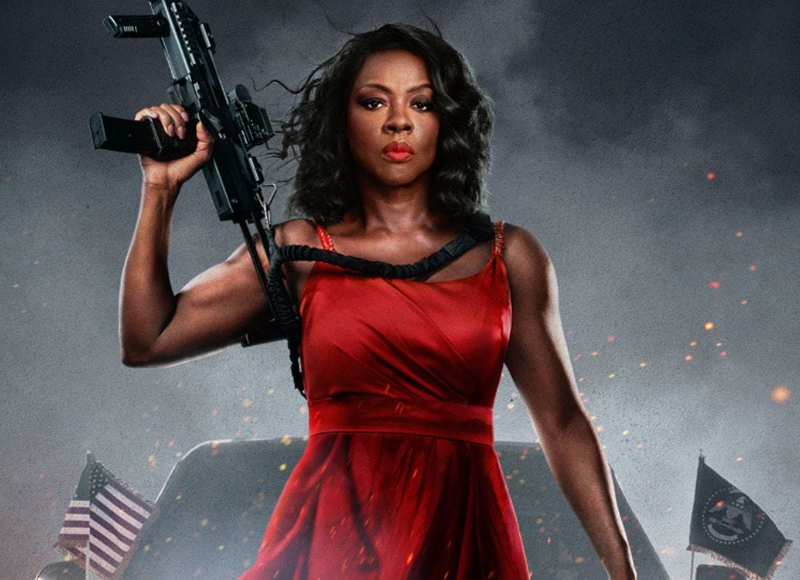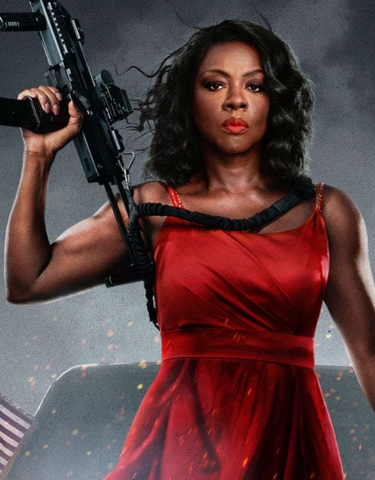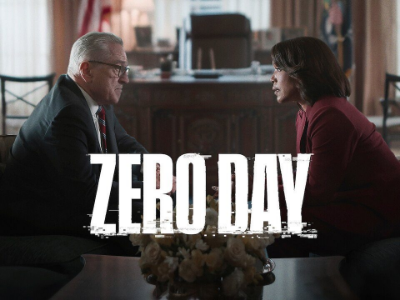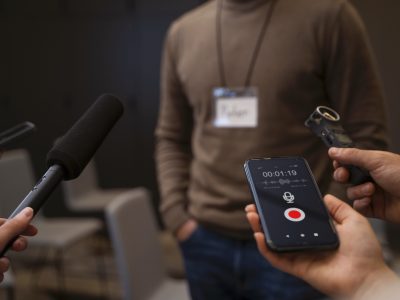In the 2024 Amazon Prime Video film G20, a routine international summit spirals into a hostage crisis, providing a dramatic case study in crisis management and risk leadership. The movie follows U.S. President Danielle Sutton (played by Viola Davis), a former soldier turned world leader, as she confronts an unprecedented disaster: a group of mercenaries seizes the G20 summit in Cape Town, taking world leaders hostage. What unfolds is an action thriller that tests Sutton’s crisis leadership, negotiation skills, security decision-making, and diplomatic finesse in real time. This academic-style analysis explores how G20 depicts high-stakes decision-making under pressure and draws broad lessons in risk identification, mitigation, resilience, and strategic response from the film’s plot. By examining President Sutton’s leadership and the international response to the summit siege, we can glean insights into effective crisis management principles applicable far beyond the movie screen.
Crisis Leadership Under Siege
Effective crisis leadership is characterized by decisive action, clear communication, and calm under pressure. G20 places President Sutton in the ultimate leadership trial by fire: as the summit erupts into chaos, she must immediately pivot from stateswoman to battlefield commander. Sutton’s military background as an Iraq War veteran proves invaluable—drawing on her combat training, she keeps a cool head and reacts swiftly to protect lives. When mercenaries led by ex-soldier Corporal Rutledge infiltrate security and launch a bloody raid, Sutton’s “quick thinking” alongside Secret Service Agent Manny Ruiz allows her and a handful of others (including the British Prime Minister) to evade capture in the initial onslaught. This split-second decision to escape and regroup is a textbook example of risk mitigation in leadership: recognizing the immediate threat and taking action to reduce harm, rather than freezing in shock. In crisis situations, leaders often must make rapid judgments about whether to confront, flee, or negotiate. Sutton chooses to lead from the front, slipping out of the terrorists’ grasp and positioning herself to direct a counter-response.
Once in hiding, President Sutton naturally emerges as the de facto leader among the scattered survivors, even though they are all heads-of-state peers. Here the film illustrates the challenge of leading under scrutiny. Sutton faces skepticism and resistance from some fellow leaders—most notably the British PM, Oliver Everett, who questions her judgment and chafes at the idea of following her orders. This tension highlights a realistic leadership dilemma in crises: authority is not always clear-cut, and a leader must earn trust on the fly. Sutton addresses this by demonstrating competence and confidence through action. Rather than engage in a power struggle, she focuses on the mission—securing the safety of hostages and foiling the attackers’ plans. Her composed demeanor and tactical know-how gradually win over the others. In essence, G20 underscores that crisis leadership requires both mental fortitude and adaptability. Sutton remains steady despite personal stakes (her own family is among those threatened) and adapts her role from negotiator to combatant as circumstances demand. This aligns with real-world crisis leadership principles that emphasize maintaining calm, instilling confidence, and being ready to switch strategies as a situation evolves. President Sutton’s example teaches that in moments of chaos, effective leaders are those who take initiative, inspire cooperation, and never lose sight of the ultimate goal – in this case, saving lives and restoring order.
Negotiation Tactics with Lives on the Line
Not every crisis can be solved by force alone; negotiation and communication are often critical tools for managing high-risk situations. G20 portrays several layers of negotiation under duress. First, there is the implicit negotiation between Sutton and the terrorists as the standoff unfolds. Corporal Rutledge, the lead mercenary, doesn’t initially seek ransom in a traditional sense – instead, his demands are ideological and strategic. He uses the hostages to advance a bizarre scheme: leveraging deepfake technology to broadcast disinformation that the G20’s initiative for global digital currency is actually a plot by world leaders to control poorer nations. By spreading this false narrative and triggering panic, Rutledge aims to crash global markets and funnel wealth into cryptocurrency under his control. In essence, the terrorists’ “demands” are to undermine the world’s financial stability to their benefit – a motive more complex than money or political prisoners.
President Sutton faces off with Corporal Rutledge at the negotiating table, each attempting to sway the other’s resolve. Despite the unconventional stakes, Sutton engages in negotiation by confronting Rutledge on his objectives. In a tense face-to-face confrontation (staged in the summit’s conference room amid overturned chairs and looming flags), she uses dialogue as a tactic to stall and gather intel. The film’s climactic scenes have Sutton and Rutledge verbally sparring – “barking their agendas at each other” as one review notes – which showcases negotiation in the form of an ideological debate. Sutton challenges the mercenary’s rationale, exposing the selfish greed behind his lofty rhetoric, while subtly buying time for her next move. This reflects a key negotiation principle: keep the antagonist talking. By engaging Rutledge in conversation, Sutton is able to assess his state of mind and distract him from harming hostages, much like a hostage negotiator who uses active listening to defuse emotions.
Furthermore, G20 illustrates internal negotiation among the allies. Sutton must persuade other world leaders to cooperate with her plans – effectively negotiating a coalition under threat. For example, when Prime Minister Everett initially urges caution or even capitulation, Sutton negotiates by appealing to shared values and stakes: they all have skin in the game, and only a proactive strategy will save their lives and countries. She balances firmness (insisting on taking action) with diplomacy (addressing peers respectfully), a blend that reflects high-stakes diplomacy within a negotiation context. The lesson here is that negotiation in a crisis isn’t limited to talking the villain down; it also involves aligning all stakeholders on a course of action. Sutton’s ability to convince her reluctant allies to trust her leadership and stick together is a form of successful negotiation that enables a unified response. In any high-pressure scenario, the calm and persuasive articulation of a plan can turn anxious collaborators into a cohesive team, improving the odds of a positive outcome.
Security Decision-Making and Risk Mitigation
A prominent theme in G20 is the examination of security preparedness – or lack thereof – and the split-second decisions required once security is breached. The G20 summit would ordinarily be a fortress of international security, yet the film pointedly shows how complacency or insider threats can undermine even the best-laid security plans. Corporal Rutledge gains access to the event by infiltrating the summit’s security detail prior to the attack. This inside-man tactic reveals a failure in risk identification: background checks or intelligence oversight missed the presence of a traitor in the protective ranks. One broad lesson is the importance of anticipating insider risks – effective risk management must look beyond obvious external threats and consider that those entrusted with safety can be compromised. In reality, major events like G20 undergo rigorous vetting and scenario planning, precisely to prevent the “unthinkable” scenario that the film dramatizes. G20 serves as a cautionary tale that overlooking low-probability, high-impact risks (like a coordinated internal takeover) can lead to catastrophic consequences.
Once the attack is underway, security decision-making shifts to real-time crisis response. Here, the film shows both the failures and successes of risk mitigation in action. The initial defense perimeter is quickly overwhelmed by the mercenaries’ surprise assault – a security failure resulting in many casualties during the “furious and bloody raid”. However, on the success side, Agent Manny Ruiz’s quick decision to hustle President Sutton and a few others out of the main hall exemplifies agile risk mitigation. Rather than engaging in a hopeless firefight at the site of attack, Ruiz implements a relocation strategy, moving key personnel to a safer position. This mirrors best practices in emergency management: when an area is compromised, change the equation by creating physical distance or barriers between innocents and threat. Subsequently, secure communication channels become a lifeline. Sutton and Ruiz use radios to stay connected, coordinate movements, and monitor enemy positions. The image of President Sutton gripping a walkie-talkie in one hand while blood stains her shoulder conveys the gravity of split-second decision-making – she is simultaneously a commander and a source of calm directives amid the chaos.
Another security decision highlighted is whether to wait for external rescue or to take matters into one’s own hands. With all world leaders as hostages, any outside military intervention (such as a special forces raid) carries enormous security risk of crossfire casualties. G20 shows Sutton and her small team choosing a localized response: they methodically pick off isolated terrorists and gather resources (weapons, information) rather than passively waiting. For instance, a notably inventive sequence involves a kitchen skirmish leading to an improvised electrical trap (using a frayed wire in a wet sink) to neutralize an attacker – a clever act of on-the-spot risk reduction. This illustrates the principle of dynamic risk mitigation: continuously finding ways to reduce the threat as the situation evolves. Every enemy taken out and every piece of intel obtained (like eavesdropping on the mercenaries’ radio chatter) tilts the odds in favor of the hostages’ survival. The takeaway is that security decision-making in crisis must be fluid. Leaders and security professionals should be ready to abandon pre-set protocols and embrace improvisation when conditions change radically. Preparedness is vital, but so is the courage to act decisively when plans collapse. By ultimately reclaiming control of the summit room one corridor at a time, Sutton’s group demonstrates that even partial, incremental risk management strategies– taken bravely – can accumulate to turn the tide of a disaster.
High-Stakes Diplomacy Amid Chaos
Crises that involve multiple nations demand not only tactical responses but also diplomatic acuity. In G20, the hostage situation unfolds on a global stage: dozens of top leaders and their spouses are trapped, and the whole world is watching (or will be, once the terrorists broadcast their deepfake propaganda). This scenario magnifies the pressure on diplomatic relationships. President Sutton, as one of the few leaders free and armed, effectively becomes the spokesperson and coordinator for the group. One of her critical tasks is managing the morale and cooperation of the various delegations under siege. High-stakes diplomacy in this context means keeping political rivalries and egos in check for the greater good of survival. Sutton uses her diplomatic skills to maintain unity among the captive leaders. She urges them to remain calm and resist giving the terrorists the psychological victory of seeing them divided. This reflects a core crisis diplomacy lesson: present a united front. Just as nations must unite in the face of global threats, the film’s scenario forces individual leaders to literally band together to survive.
The cultural and political differences between the G20 representatives could easily flare under stress, but Sutton mitigates this through inclusive leadership. For example, she does not pull rank as the U.S. President to unilaterally call the shots; instead, she listens to input – even Everett’s pessimistic counsel – and then builds consensus around a course of action. By giving each leader a role or purpose (even if that role is as simple as “stay quiet and be ready to move when I signal”), she taps into their sense of responsibility. In one scene, a nervous head of state is on the verge of panic; Sutton steadies him with a firm reminder that “we all have families out there depending on us”, appealing to his duty beyond himself. This moment encapsulates high-stakes diplomacy as depicted in G20: the ability to invoke shared values and common goals to maintain cooperation. The film’s climax even includes a symbolic image of world leaders physically coming together after the crisis, underscoring that collaboration was key to overcoming the threat. The broader lesson is clear – whether dealing with a terrorist siege or a global pandemic, resilience is strongest when nations (or people) work in concert rather than at cross purposes. Diplomatic leadership in a crisis involves managing personalities and politics under extreme pressure, and G20 dramatizes this by showing how Sutton transforms a disparate group of VIPs into a team with a single aim.
High-stakes diplomacy also extends to the external response. Even while fighting inside, Sutton must consider the international ramifications of every decision. A major subplot of the film is her humanitarian initiative (promoting digital banking access for poor farmers) which initially brought the leaders together. Rutledge’s attempt to pervert this initiative with lies could sow distrust between nations at a delicate time. Aware of this, Sutton’s strategy isn’t merely to defeat the terrorists physically, but also to win the narrative. After subduing the mercenaries, she takes steps to broadcast the truth and reaffirm the summit’s original spirit of cooperation, likely with the help of her tech-savvy daughter to counter the disinformation. In doing so, she engages in diplomacy with the world audience, reassuring global populations and markets that the crisis is over and the malicious crypto scheme has failed. This reinforces how in any large-scale crisis, leaders must manage not just the tactical resolution but also the public communication and diplomatic messaging that follow. Trust, once shaken, has to be rebuilt through transparency and unity. G20 ends on an optimistic diplomatic note: the notion that if world leaders can literally fight side by side to overcome evil, they can surely set aside differences in less dire circumstances. It’s an almost utopian coda, but one that drives home the ideal that solidarity is the ultimate antidote to chaos in international affairs.
Resilience and Strategic Response in Action
Beyond the immediate thriller elements, G20 imparts a powerful message about resilience – both personal and institutional – in the face of disaster. President Sutton embodies resilient leadership. Physically bruised and emotionally strained, she nonetheless perseveres through every setback: when an escape path is cut off, she finds another; when an ally is injured, she adjusts the plan. This relentless drive illustrates that resilience is not just an abstract quality but is demonstrated through continuous problem-solving and morale-sustaining behavior. Sutton’s personal resilience also has a ripple effect. Her courage under fire inspires her family members and colleagues to be brave and resourceful. Notably, her teenage daughter Serena, introduced initially as a source of distraction (caught sneaking out and causing headaches for her mother, becomes an asset during the crisis thanks to her hacking skills. Serena helps disable the terrorists’ communications or counter their deepfake video, turning the tide of the information war. This subplot shows organizational resilience in action: the ability of a group (in this case, the President’s makeshift team) to leverage each member’s strengths when it counts. Even those who seemed to be liabilities can contribute to the solution under inspired leadership. The warming of the once-frigid mother-daughter relationship amid the chaos further humanizes the concept of resilience – crisis can either fracture a team or forge it stronger, and in G20 we see the forging of stronger bonds.
Strategic response goes hand-in-hand with resilience. While resilience is about withstanding the shocks, strategic response is about choosing the right actions to end the crisis on favorable terms. Sutton displays strategic acumen by setting clear priorities: protect lives, neutralize the threat, and preserve the future (both the immediate future of the summit and the broader economic future under attack). Throughout the film, she constantly balances these priorities. For example, when presented with a chance to eliminate Rutledge at the risk of collateral damage, she opts for a slower approach that safeguards the hostages – reflecting the principle that a leader’s strategy must uphold the core value of preserving life whenever possible. At the same time, she understands the broader implications of the crisis; her strategy isn’t purely defensive. Sutton takes calculated risks to seize the initiative, such as infiltrating the control room where Rutledge’s tech experts are operating. By seizing their equipment, she both disrupts the enemy’s plan and gains a communication line to the outside. This maneuver illustrates risk identification and exploitation – identifying a critical vulnerability in the adversary (their reliance on technology) and exploiting it to turn the tables. It’s a reminder that in strategic response, leaders should look for the opponent’s weak link or a force multiplier that can quickly shift momentum.
Finally, the resolution of the film emphasizes learning and adaptation, which are key aspects of strategic resilience. After the dust settles and the hostages are safe, President Sutton does not simply revert to business-as-usual. Instead, G20 implies that the experience leads to improved protocols (one imagines much stricter security vetting next time) and a renewed commitment among the leaders to collaborative action. The obvious metaphor of “world leaders needing to come together if the world hopes to prosper” at the film’s end is more than feel-good imagery – it is a strategic lesson. Crises can be turning points that galvanize improvements.With risk professionals, every crisis should prompt an after-action review: identify what went wrong, what saved the day, and how to institutionalize those lessons. Sutton’s victory is not just that she survived, but that she turned a potential global catastrophe into a reaffirmation of international unity and purpose. In summary, G20 teaches that resilience coupled with strategic foresight can transform even the gravest risks into opportunities for renewal.
Conclusion: Lessons in Risk and Resolve
Prime Video’s G20 dramatizes a nightmare scenario of global leaders under siege, yet within the Hollywood thrills lie poignant lessons in global risk management and leadership. The film’s portrayal of President Sutton and the summit crisis reinforces several key principles:
- Identify and Prepare for Extreme Risks: Even low-probability threats (like an internal security breach at a G20 summit) should be on the radar. Proactive planning and red-teaming could mitigate security risk, the kind of failures seen in G20’s initial attack. The movie underscores the cost of missed warning signs and the need to always assume the possibility of a crisis.
- Decisive Leadership and Clear Communication: In any disaster, someone must take charge. Sutton’s calm, decisive leadership and real-time communication kept a dire situation from collapsing into total chaos. Leaders who project confidence and clarity can steady everyone around them when it matters most.
- Effective Negotiation and Diplomacy: The dual track of confronting the aggressors while uniting the allies highlights that communication is a weapon and a shield. Skillful negotiation – whether with foes or friends – can save lives, buy time, and prevent panic. Sutton’s ability to balance firmness with empathy exemplifies the power of diplomacy under fire.
- Adaptive Security Measures: Rigidity can be fatal in a fast-moving crisis. The characters who survive in G20 do so by constantly adapting – changing location, tactics, and strategy as events unfold. This adaptability, born from resilience, is crucial in risk mitigation. Being ready to improvise can mean the difference between paralysis and progress in an emergency.
- Resilience and Recovery: Finally, G20 drives home that resilience is both an immediate necessity and a long-term project. In the moment, resilience means refusing to submit to fear and continuing to function; in the aftermath, it means learning and rebuilding stronger. The solidarity of the G20 leaders post-crisis illustrates that true resilience leads to growth – forging stronger alliances and improved systems to face future challenges.
In conclusion, G20 may be a fictional action-thriller with Hollywood heroics, but it resonates with real-world wisdom on crisis management. The film vividly shows that risk and resolve are two sides of the same coin: by understanding different technological risks and responding with unwavering resolve, leaders at any level can guide their teams through the worst of storms. From the corridors of the summit siege to the boardrooms and government offices of the real world, the lessons remain: prepare for the unexpected, lead with courage, communicate with purpose, and never lose sight of the mission – even when the stakes are as high as saving the world.














